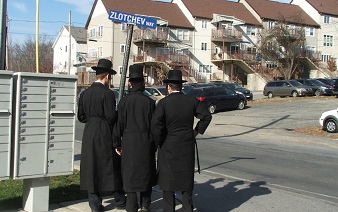Indiana’s HB 1134 has passed the House. All its supporters had to do was not openly endorse Nazis in order to avoid the sort of unwelcome attention its companion bill in the state Senate received.
The sections of this bill which dance around the edges of “stop teaching about racism” have been well-covered elsewhere. What I’d rather focus on here are some of the less-discussed, but severely problematic bits of this legislation – starting with this:
The ideals and values expressed or enumerated in the Constitution of the United States and the economic and political institutions of the United States are better suited to contribute toward human advancement, prosperity, scientific inquiry, and well-being compared to forms of government that conflict with and are incompatible with the principles of western political thought upon which the United States was founded.
Let’s step back and give that a little context, shall we?
Turns Out We Push Beliefs After All…
Current Indiana law requires schools to teach “good citizenship instruction,” including…
(1) Being honest and truthful. {HB 1134 would add “unless doing so violates the new guidelines.”}
(2) Respecting authority.
(3) Respecting the property of others.
(4) Always doing the student’s personal best.
(5) Not stealing. {Which is somehow distinct from “respecting the property of others.”}
(6) Possessing the skills (including methods of conflict resolution) necessary to live peaceably in society and not resorting to violence to settle disputes. {HB 1134 would add “unless doing so violates the new guidelines.”}
(7) Taking personal responsibility for obligations to family and community. {I don’t love this one, but it’s already part of the language.}
(8) Taking personal responsibility for earning a livelihood. {Yeah, I know – but again, it’s already in there.}
(9) Treating others the way the student would want to be treated.
(10) Respecting the national flag, the Constitution of the United States, and the Constitution of the State of Indiana.
(11) Respecting the student’s parents and home.
(12) Respecting the student’s self.
(13) Respecting the rights of others to have their own views and religious beliefs.
HB 1134 adds a few more:
(14) The ideals and values expressed or enumerated in the Constitution of the United States and the economic and political institutions of the United States are better suited to contribute toward human advancement, prosperity, scientific inquiry, and well-being compared to forms of government that conflict with and are incompatible with the principles of western political thought upon which the United States was founded.
That’s the bit quoted above. It’s a serious mouthful of patriotism, don’t you think? Let’s see if we can unpack this one a little…
Ideals & Values?
At first glance, it seems to merely be pushing the message that the ideals and values of the U.S. Constitution are nifty. Schools are government entities and it makes sense we’d be expected to do a little cheerleading for our founding documents from time to time.
Honestly, I can live with that.
But that’s not what it says. I’m not sure if the phrasing is intentionally deceptive or simply result from the general ignorance of the authors, but this language in some ways troubles me more than the “stop making rich white kids feel bad” parts.
See, the Constitution doesn’t really say much about ideals or values. The Preamble offers some guiding structure for what it intends to accomplish…
We the People of the United States, in Order to form a more perfect Union, establish Justice, insure domestic Tranquility, provide for the common defense, promote the general Welfare, and secure the Blessings of Liberty to ourselves and our Posterity, do ordain and establish this Constitution for the United States of America.
I guess those might count as ideals or values. Other than that, however, the Constitution is largely structural:
Immediately after {the Senate} shall be assembled in Consequence of the first Election, they shall be divided as equally as may be into three Classes. The Seats of the Senators of the first Class shall be vacated at the Expiration of the second Year, of the second Class at the Expiration of the fourth Year, and of the third Class at the Expiration of the sixth Year, so that one third may be chosen every second Year…
The President shall be Commander in Chief of the Army and Navy of the United States, and of the Militia of the several States, when called into the actual Service of the United States; he may require the Opinion, in writing, of the principal Officer in each of the executive Departments, upon any Subject relating to the Duties of their respective Offices…
The Congress shall have Power to dispose of and make all needful Rules and Regulations respecting the Territory or other Property belonging to the United States; and nothing in this Constitution shall be so construed as to Prejudice any Claims of the United States, or of any particular State.
Important? Absolutely. But I’m not sure how many “ideals” and “values” are captured.
Personally, I’d have started with the Declaration of Independence:
We hold these truths to be self-evident, that all men are created equal, that they are endowed by their Creator with certain unalienable Rights, that among these are Life, Liberty and the pursuit of Happiness.–That to secure these rights, Governments are instituted among Men, deriving their just powers from the consent of the governed, –That whenever any Form of Government becomes destructive of these ends, it is the Right of the People to alter or to abolish it, and to institute new Government, laying its foundation on such principles and organizing its powers in such form, as to them shall seem most likely to effect their Safety and Happiness…
Now THOSE are ideals and values.
Perhaps HB 1134 is referring to the Bill of Rights and other amendments. These are, after all, very much part of the U.S. Constitution as it now exists. They’re not expressed as “values” or “ideals,” but as restrictions on what the federal government (and later the states themselves) can do to individuals:
Amendment I: Congress shall make no law respecting an establishment of religion, or prohibiting the free exercise thereof; or abridging the freedom of speech, or of the press; or the right of the people peaceably to assemble, and to petition the Government for a redress of grievances.
Amendment IV: The right of the people to be secure in their persons, houses, papers, and effects, against unreasonable searches and seizures, shall not be violated, and no Warrants shall issue, but upon probable cause, supported by Oath or affirmation, and particularly describing the place to be searched, and the persons or things to be seized.
Amendment VII: In Suits at common law, where the value in controversy shall exceed twenty dollars, the right of trial by jury shall be preserved, and no fact tried by a jury, shall be otherwise re-examined in any Court of the United States, than according to the rules of the common law.
Amendment XV: The right of citizens of the United States to vote shall not be denied or abridged by the United States or by any State on account of race, color, or previous condition of servitude.
Yeah, I’m certain the GOP didn’t have THAT one in mind.
Implication & Inference
Let’s assume the bill means the Constitution and all current amendments, and that the ideals and values of the Declaration of Independence go without saying. Should teachers promote these as better than everyone else’s values and ideals? In short, are we OK with a little American Exceptionalism in this area?
For argument’s sake, I’m going to go with “yes.” (One of my main arguments with the modern Republican Party is how far they’ve strayed from these founding values.) But that’s NOT WHAT THIS CLAUSE SAYS:
The ideals and values expressed or enumerated in the Constitution of the United States and the economic and political institutions of the United States are better suited to contribute toward human advancement, prosperity, scientific inquiry, and well-being compared to forms of government that conflict with and are incompatible with the principles of western political thought upon which the United States was founded.
That’s a big “AND” in there. “AND the economic and political institutions of the United States”? The ones which have developed over the past 200+ years but have no foundation in the Constitution or any of its amendments? The ones many of our Founders openly fought against in designing our nation? The ones which have come, gone, and evolved over the years depending on circumstances, sometimes growing and sometimes being restrained? THOSE economic and political institutions?
Economic Institutions
I figure before I get too far on the subject, I should make sure I’m not simply confused about the terminology. I looked up “economic institutions” on several sites to make sure it means what I think it does.
According to the Library of Economic and Liberty (EconLib)…
The term “Economic Institutions” refers to two things:
1. Specific agencies or foundations, both government and private, devoted to collecting or studying economic data, or commissioned with the job of supplying a good or service that is important to the economy of a country. The Internal Revenue Service (the IRS—the government tax-collection agency), the U.S. Federal Reserve (the government producer of money), the National Bureau of Economic Research (a private research agency) are all examples of economic institutions.
2. Well-established arrangements and structures that are part of the culture or society, e.g., competitive markets, the banking system, kids’ allowances, customary tipping, and a system of property rights are examples of economic institutions.
Huh. Maybe I’ll get a second opinion… Here’s an explanation from the MIT Department of Economics:
Institutions: the rules of the game in economic, political and social interactions… {Examples of } economic institutions {include} property rights, contract enforcement, etc.
This site goes on to note an “important distinction” between
Formal institutions: codified rules, e.g. in the constitution
Informal institutions: related to how formal institutions are used, to distribution of power, social norms, and equilibrium.
In other words, this is an insanely broad term for something we’re going to be legally required to promote as the unerring zenith of all humanity.
Political Institutions
This one is slightly less problematic. Most sites agree the term encompasses the three major branches and all their variations at the state and local levels, as well as every level of bureaucracy (which I thought the GOP wanted to reduce), the two major political parties and the ways in which they do business, and the voting processes currently in place (which I could have sworn Republicans find corrupt and in need of serious reform).
If this law passes, we will be legally required as educators to insist that our current bureaucracy and voting machines are both part of a system more divinely suited to human happiness than any other conceivable variation. Not sure how Trump will feel about THAT.
In The Beginning Was The Fed…
I have no beef with the Federal Reserve, for example, but am I willing to insist that it is “better suited to contribute toward human advancement, prosperity, scientific inquiry, and well-being” compared to anything China has ever tried over the past 10,000 years? Compared to the values of Native American cultures who seemed pretty happy until we showed up? Compared to the Nations of Israel in the Old Testament? India under Ashoka? Mali under Mansa Musa? That what was REALLY missing in each subpar society was the Fed?
Our current two-party system is well outside anything our the Framers intended. Washington and others openly opposed it as divisive. But whatever else you can say about it, our current party system is absolutely a political institution of the United States. And according to HB 1134, it’s one which simply cannot be improved upon – it’s “better suited to contribute towards human advancement, prosperity, scientific inquiry, and well-being” than anything else ever in the history of mankind or anything else being tried anywhere else in the world.
Add the Electoral College (which is at least in the Constitution), the current relationship between big business and government, the industrial-military complex, the I.R.S., every bureaucratic agency at every level, every financial arrangement involving tax dollars, and so on – and I’m just not comfortable declaring that WE. HAVE. ARRIVED.
Maybe that’s not what this bill’s authors intended, but that’s what this clause says. I’m not sure there’s any other way to interpret it. If this passes, all those discussions in U.S. History or AP Government or Economics class debating the pros and cons of this or that system, this or that financial structure, etc., will become verboten. We will instead be required to insist – evidence and other points of view be damned – that the current economic and political institutions of the United States are the ideal short of which everything else falls and has always fallen.
I suppose that goes well with the new “fact” that racism and sexism have never been inherent in larger economic, social, or legal systems – just lots and lots of unfortunate random individual acts of being codified in law and supported by government officials.
Final Additions
There are two more elements schools will be required to integrate “into the current instruction”:
(15) Individual rights, freedoms, and political suffrage.
I just can’t even with the irony of this one.
(16) The economic and political institutions which have best contributed toward human advancement, prosperity, scientific inquiry, and well-being.
And I’m bewildered by this one. Only two clauses ago, we were explicitly commanded that current U.S. economic and political institutions have best contributed blah blah THOSE EXACT SAME THINGS. So what, exactly, are we covering in THIS clause?
Conclusion
As I said at the outset, it’s often difficult to distinguish between malice and ignorance. It’s a dilemma I faced in Oklahoma many times when trying to make sense of proposed legislation, and a large part of why I try to avoid it here in Indiana. But if we’re going to argue about this bill, I’d certainly appreciate someone stepping up and at least explaining what the hell they mean by some of this stuff. (Honestly, I doubt most of the bill’s supporters have the slightest clue.)
What it very much appears to be is a leap past banning the teaching of anything unpleasant in our collective past into requiring that we glorify the state in all its variations as ideal and above questioning – a level of nationalism and publicly-funded propaganda frighteningly consistent with many other Republican priorities at the moment.
Next time, I’ll try to tackle those “principles of western political thought” mentioned in the same clause. I’m not sure Republicans are actually going to like those very much, either.






